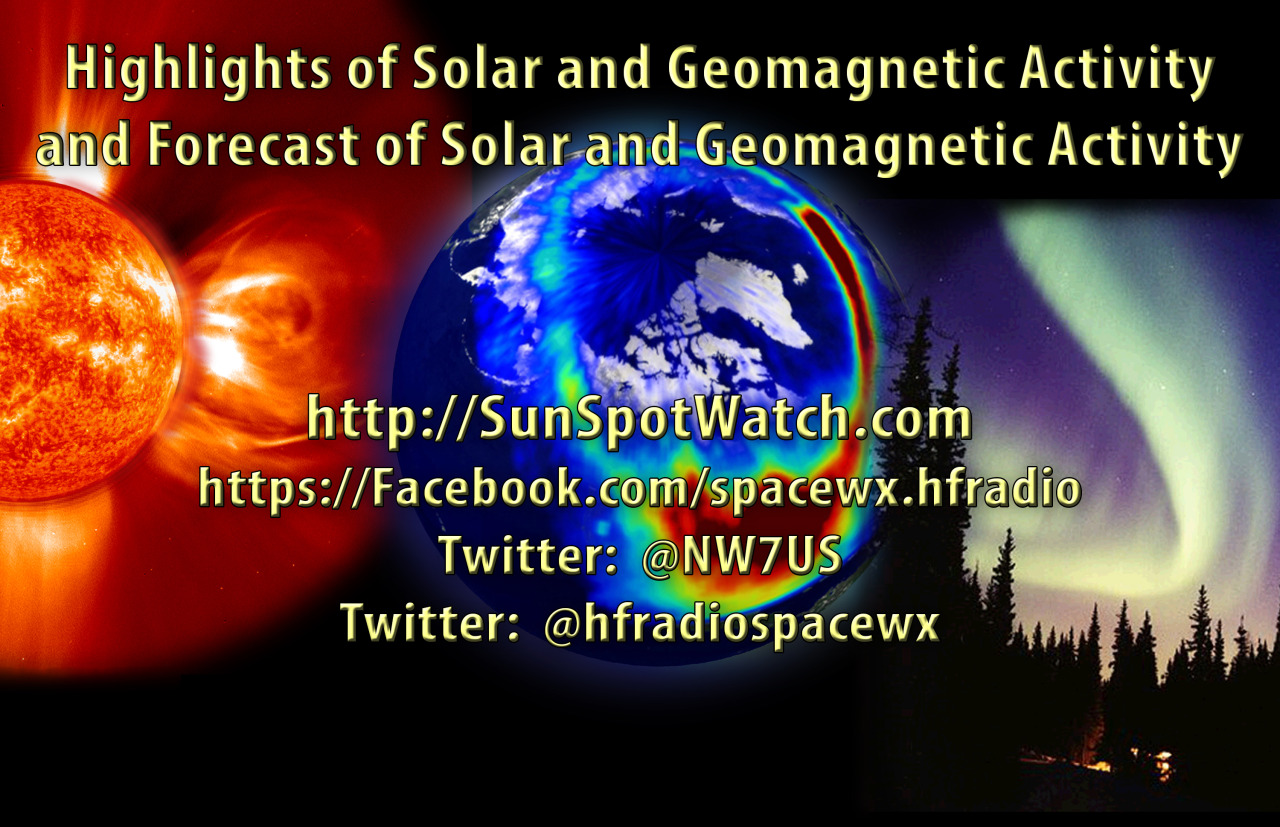 Weekly Propagation Summary – 2016 Jan 04 16:10 UTC
Weekly Propagation Summary – 2016 Jan 04 16:10 UTC
Here is this week’s space weather and geophysical report, issued 2016 Jan 04 0534 UTC.
Highlights of Solar and Geomagnetic Activity 28 December – 03 January 2016
Solar activity ranged from very low to moderate levels. Very low activity was observed on 03 Jan, low level activity on 29 Dec – 01 Jan, and moderate level activity on 28 Dec and 02 Jan. Region 2473 (S22, L=331, class/area=Fkc/590 on 26 Dec), which exhibited a complex beta-gamma-delta configuration, produced all of the significant flare activity (2 M-class, 14 C-class).
On 28 Dec, Region 2473 produced an M1 flare at 28/1245 UTC. Associated with this event was a Type IV radio emission and a partial-halo CME observed off the southern portion of the disk, first visible in LASCO coronagraph imagery at 12/1212 UTC. Analysis of this CME determined that an Earth-directed component was present.
On 02 Jan, Region 2473 produced a long duration M2 flare at 02/0011 UTC. Associated with this event were Type II (1095 km/s) and IV radio emissions and an assymetric partial-halo CME observed off the southwest limb, first visible in LASCO coronagraph imagery at 01/2324 UTC. Analysis of this CME determined that a weak Earth-directed component was present and would arrive around midday on 03 Jan, though eventually proved to be a miss.
There was greater than 10 MeV proton event on 02 Januaury 2016. The event began at 02/0430 UTC shortly after a long duration M2 flare that accured at 02/0011 UTC. Proton flux reached a maximum flux value of 21 pfu (S1-Minor) at 02/0450 UTC and ended at 02/0750 UTC.
The greater than 2 MeV electron flux at geosynchronous orbit was at high levels throughout the period with the exception of 31 December when moderate flux levels were observed. A maximum flux of 6,782 pfu was observed at 03/1600 UTC.
Geomagnetic field activity ranged from quiet to moderate (G2) storm conditions. At 31/0003 a small shock was observed at the ACE spacecraft. Total field (Bt) increased from 5 nT to 13 nT with a corresponding solar wind speed increase from 350 km/s to 500 km/s. The shock was associated with the arrival of the 28 Dec CME observed in LASCO C2 imagery at 28/1212 UTC. Isolated G1-Minor to G2-Moderate storm conditions were observed midday through late on 31 Dec as well as early on 01 Jan. Mostly quiet conditions were observed on 28 – 30 Dec, 02-03 Jan.
Forecast of Solar and Geomagnetic Activity 04 January – 30 January 2016
Solar activity is expected to be at low levels with a chance for M-class (R1-R2, Minor-Moderate) flare activity from 15 Jan – 28 Jan due to the return of Region 2473 (S22, L=331). Very low solar activity is expected for the remainder of the period.
No proton events are expected at geosynchronous orbit.
The greater than 2 MeV electron flux at geosynchronous orbit is expected to be high from 04 – 13 Jan, 25 – 30 Jan due to recurrent coronal hole high speed streams (CH HSS).
Geomagnetic field activity is expected to be at active levels on 04, 07, and 22 Jan with G1-Minor storm conditions on 06 Jan due to recurrent CH HSS activity. Mostly quiet to unsettled levels are expected for the rest of the period.
Don’t forget to visit our live space weather and radio propagation web site, at: http://SunSpotWatch.com/
Live Aurora mapping is at http://aurora.sunspotwatch.com/
If you are on Twitter, please follow these two users: + https://Twitter.com/NW7US + https://Twitter.com/hfradiospacewx
Get the space weather and radio propagation self-study course, today. Visit http://nw7us.us/swc for the latest sale and for more information!
Check out the stunning view of our Sun in action, as seen during the last five years with the Solar Dynamics Observatory (SDO): https://www.youtube.com/watch?v=zXN-MdoGM9g
We’re on Facebook: http://NW7US.us/swhfr














